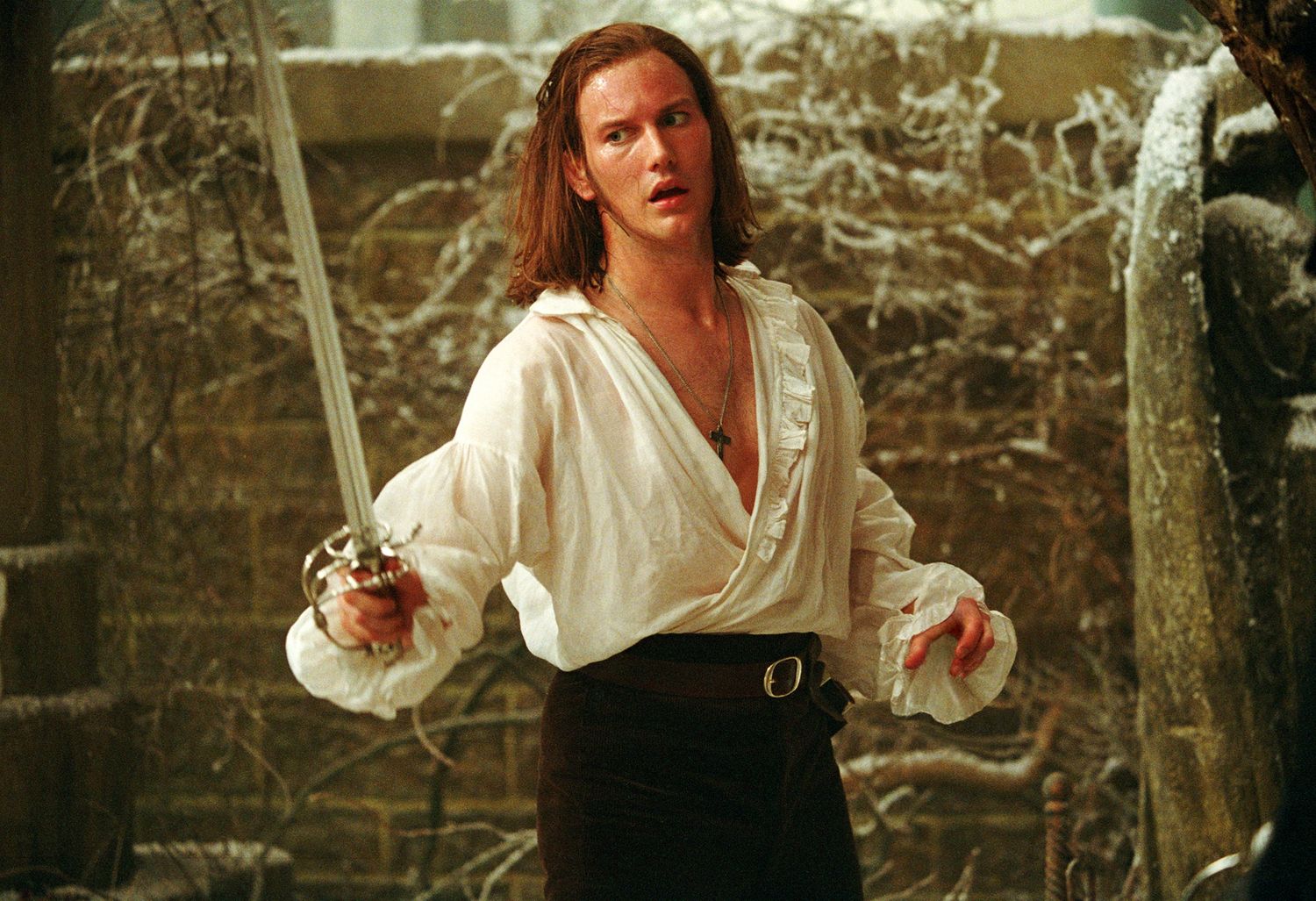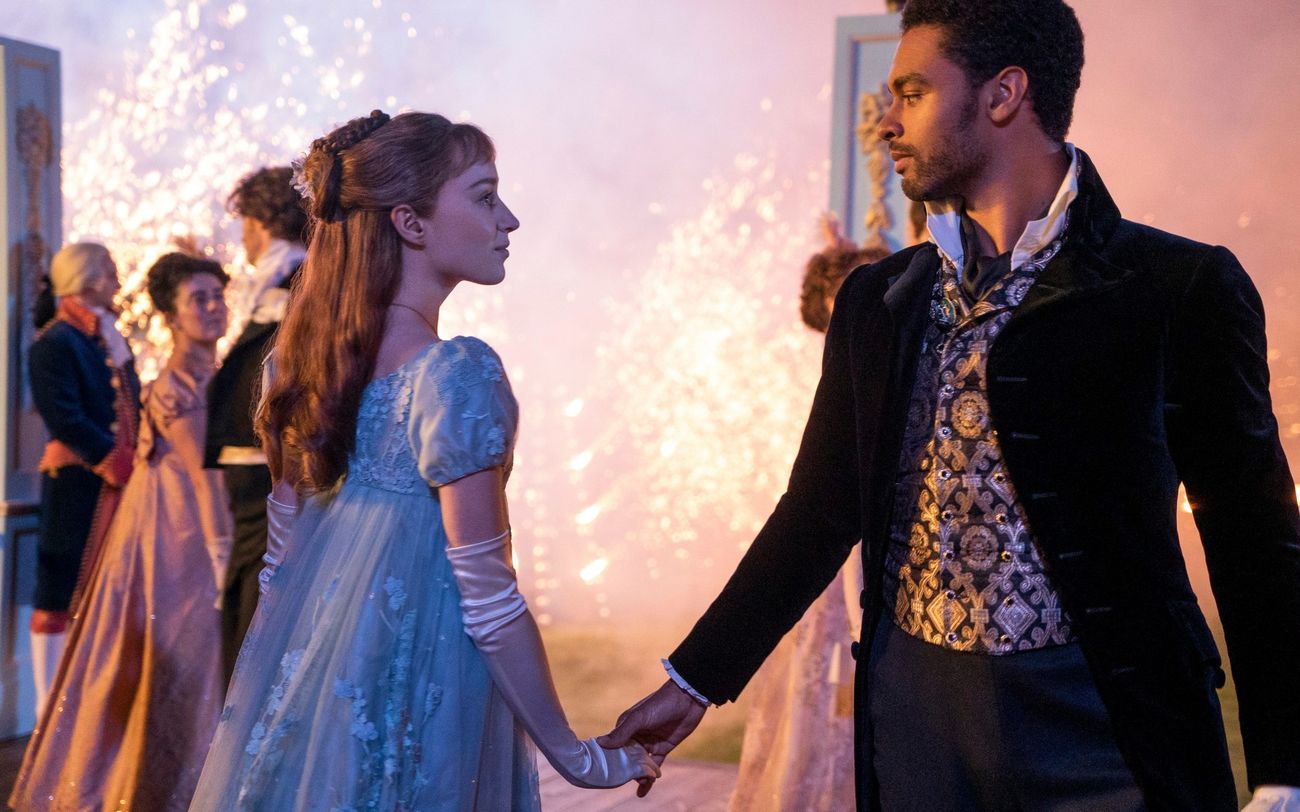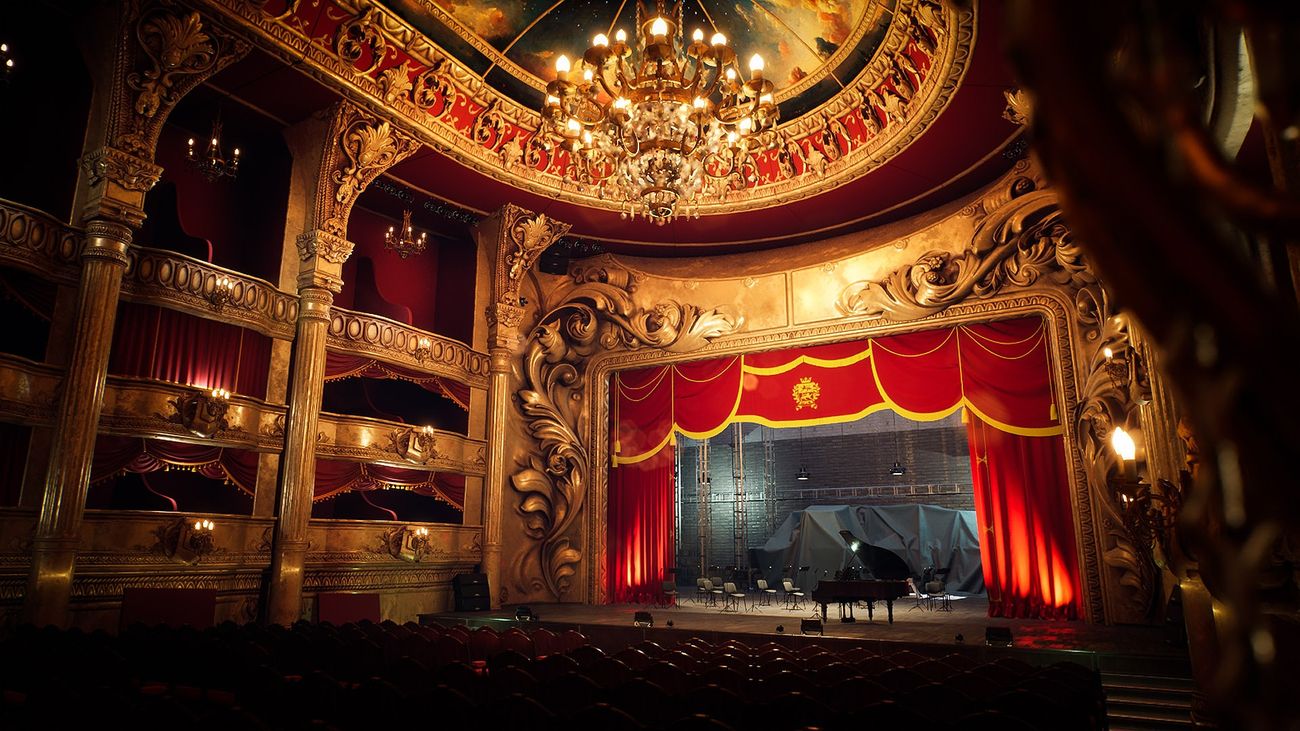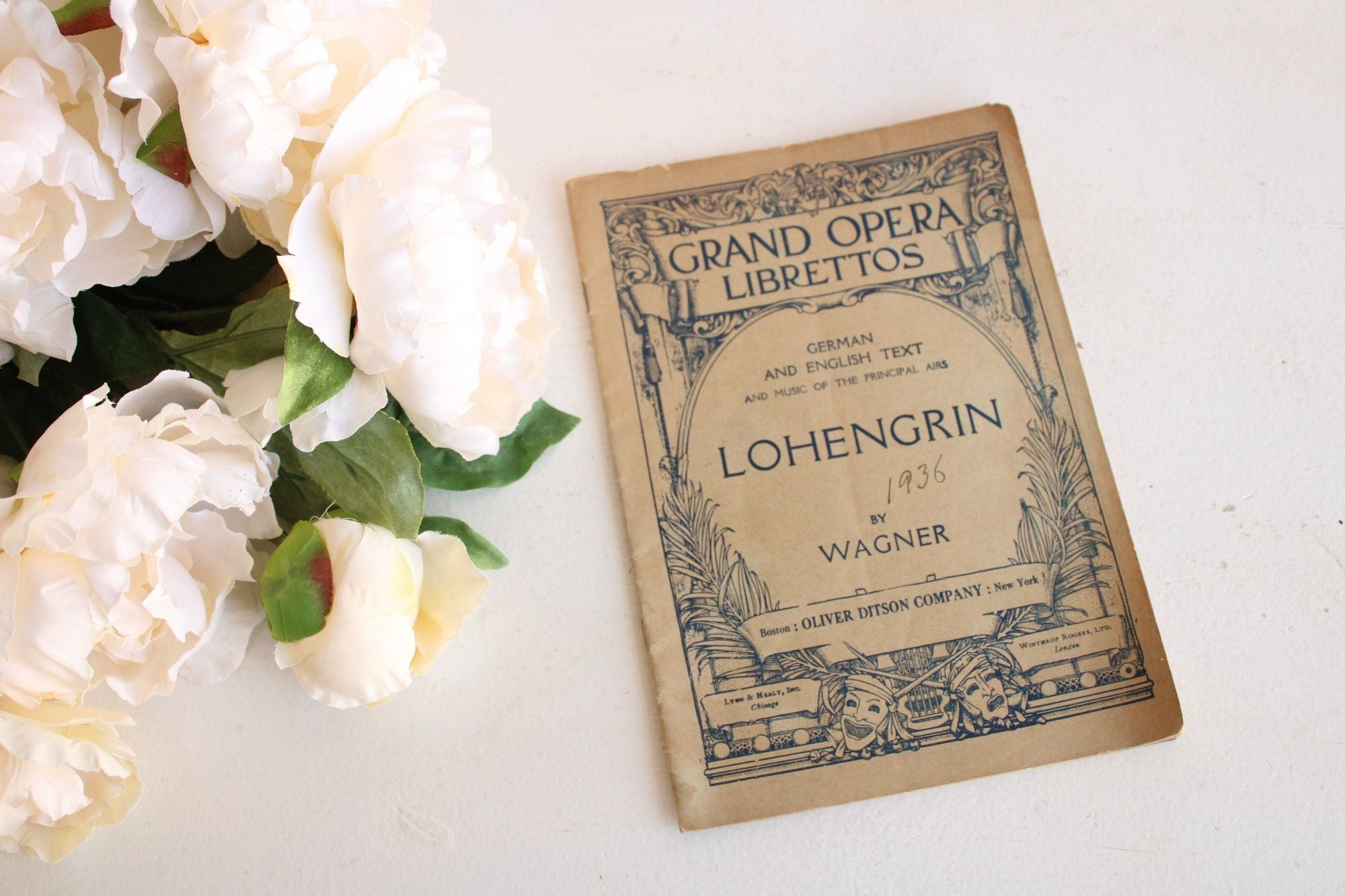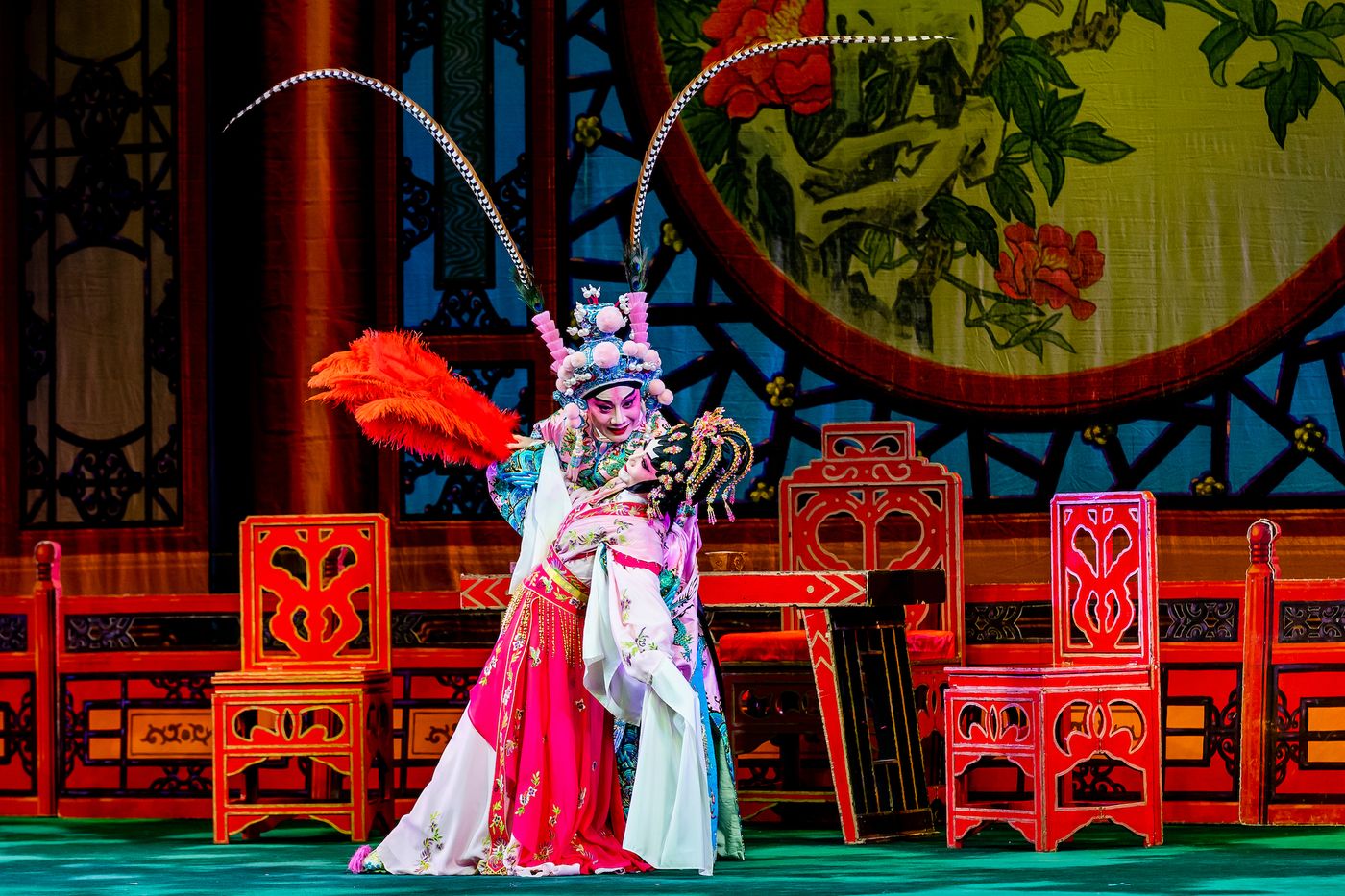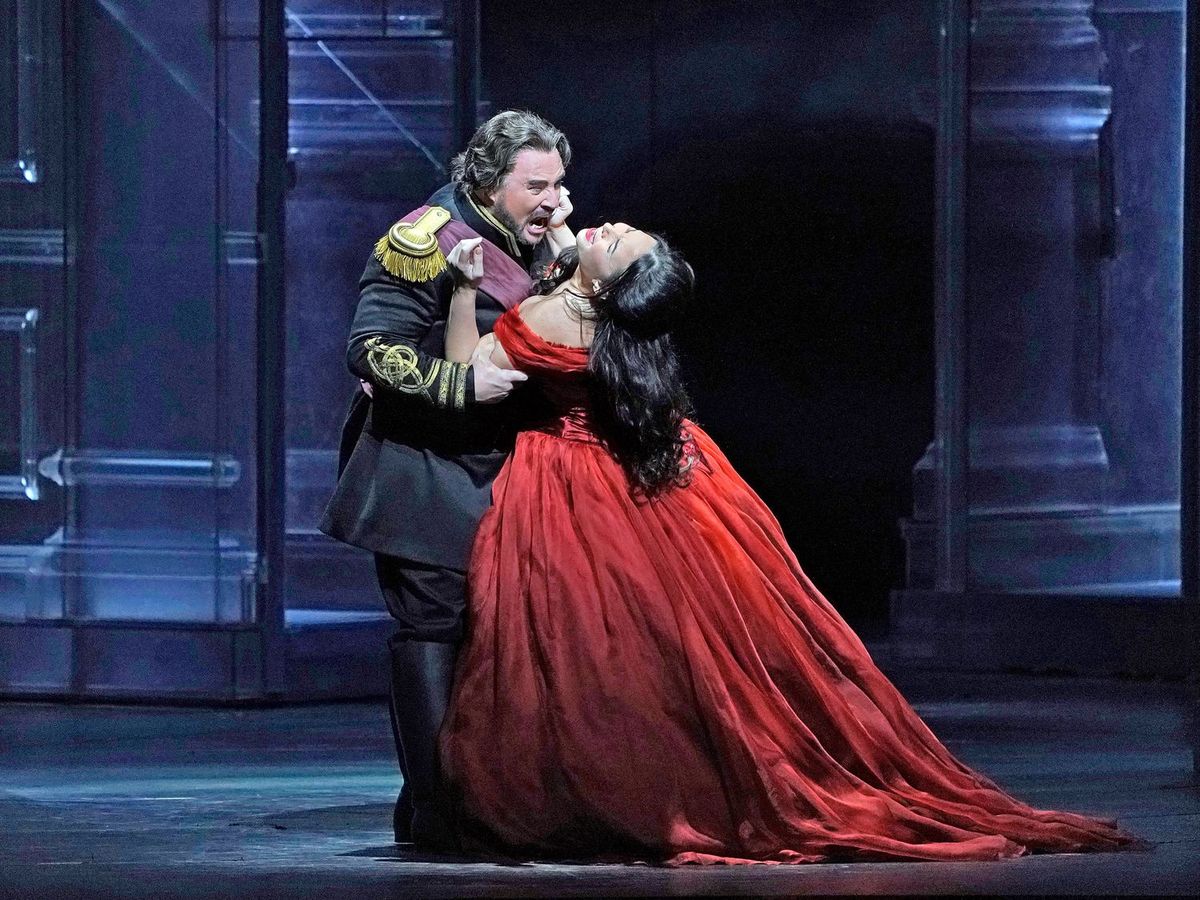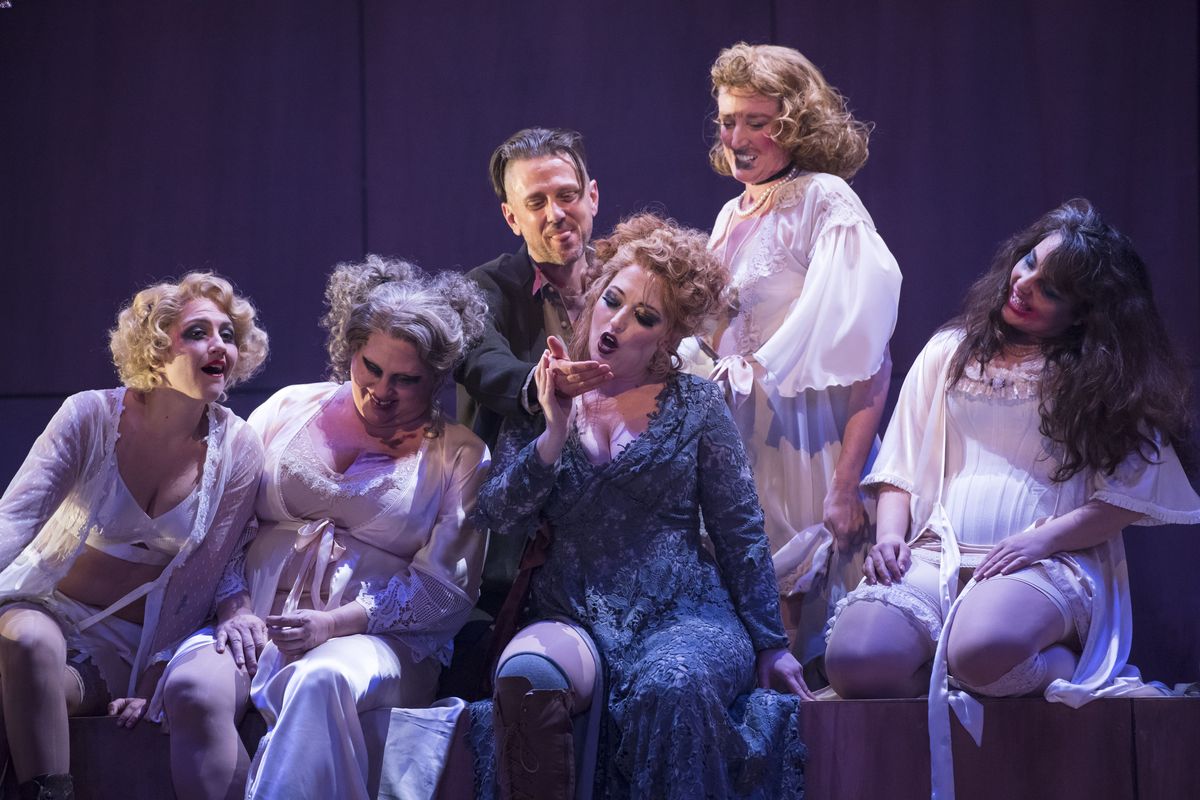Home>Events & Info>Opera>How Is The Oratorio Similar To Opera


Opera
How Is The Oratorio Similar To Opera
Modified: January 22, 2024
Discover the similarities between oratorio and opera. Explore the captivating world of music, drama, and spectacle with our insightful analysis.
(Many of the links in this article redirect to a specific reviewed product. Your purchase of these products through affiliate links helps to generate commission for AudioLover.com, at no extra cost. Learn more)
Table of Contents
Introduction
Opera and oratorio are both forms of musical expression that have captivated audiences for centuries. While they share similarities in their use of music, singing, and storytelling, there are also distinct differences between the two. In this article, we will explore the fascinating world of oratorio and how it compares to opera.
An oratorio is a large-scale composition for orchestra, chorus, and vocal soloists that tells a religious or moral story. It is typically performed in concert settings without staging, costumes, or elaborate sets. Unlike opera, which combines music, theater, and visual elements, oratorio relies solely on the power of music and the performers’ ability to convey the story through their voices.
Operas, on the other hand, are theatrical works that combine music, acting, and staging to bring stories to life. They often feature elaborate costumes, sets, and props, making for a visually immersive experience. Operas are usually performed in opera houses, with a full orchestra, chorus, and vocal soloists.
The origins of these two art forms can be traced back to different time periods and cultural contexts. Opera emerged in Italy during the late 16th century, primarily as a way to revive Greek drama. It quickly gained popularity throughout Europe and became known for its grandeur, emotional intensity, and the virtuosity of its singers. Oratorio, on the other hand, originated in the 17th century in Italy as a form of religious music, but it found its true home in Germany and England, where it flourished in the Baroque era.
While both opera and oratorio are vocal forms, their musical structure differs. Operas are composed of arias, recitatives, ensembles, and choruses, with a strong emphasis on melody and dramatic expression. Oratorios, on the other hand, are composed of chorus movements, arias, and recitatives, with a greater emphasis on the text and the interaction between the vocal soloists and the chorus.
Another difference between the two forms lies in the use of soloists. In opera, the soloists are often the main characters of the story and carry the narrative forward through their singing and acting. In oratorio, the soloists portray various characters or voices within the story, but they are not necessarily acting out a specific role. Instead, they focus on delivering the emotional and spiritual message of the music.
Both opera and oratorio rely heavily on the chorus and orchestra to enhance the overall musical experience. The chorus plays a pivotal role in both forms, providing commentary, adding depth to the storytelling, and conveying the emotional impact of the music. The orchestra, with its rich palette of instruments, creates the melodic and harmonic foundation upon which the vocalists and the chorus can weave their magic.
Definition of Oratorio
An oratorio is a musical composition that is primarily based on a religious or moral theme and is performed without staging or costumes. It is a form of vocal music that combines narrative storytelling, solo singing, choral music, and orchestral accompaniment. Oratorios are typically performed in concert venues or church settings, with the performers standing or seated in front of the audience.
Unlike operas, oratorios do not require theatrical elements such as elaborate sets, costumes, or acting. Instead, they rely solely on the power of music and the expressive abilities of the performers to convey the story and evoke emotions in the listeners. The word “oratorio” is derived from the Latin “Oratorium,” meaning “a place of prayer,” and reflects the spiritual and contemplative nature of this musical form.
Oratorios are often based on biblical stories, saints’ lives, or other religious narratives. They delve into deep moral and philosophical themes, exploring the human condition, spirituality, and the struggle between good and evil. The text of an oratorio is usually in a language that the audience can understand, allowing them to follow the story and meaning behind the music.
In terms of musical structure, oratorios consist of various vocal movements, including recitatives, arias, and choruses. Recitatives are sung in a speech-like manner and allow for the advancement of the plot. They are often used to convey dialogue or narrative passages. Arias, on the other hand, are solo songs that highlight the emotional depth and virtuosity of the vocal soloists. Choruses are larger vocal ensembles that provide commentary, reflection, or communal responses to the narrative or moral message of the oratorio.
Oratorios also feature orchestral accompaniment, which enriches the musical texture and adds depth and color to the overall performance. The orchestra typically includes a variety of instruments, such as strings, woodwinds, brass, and percussion, which work in harmony with the voices to create a harmonious and emotionally charged musical experience.
Although oratorios share similarities with operas in terms of vocal techniques, storytelling, and musical elements, they are distinct forms of expression. Oratorios are more focused on the spiritual or moral content, allowing the audience to reflect on profound themes and contemplate the meaning behind the music. The absence of staging and visual distractions allows listeners to fully immerse themselves in the music and engage with the spiritual journey offered by the oratorio.
Overall, oratorios are profound and introspective works of art that combine religious themes, emotional storytelling, and powerful music. They have captivated audiences for centuries and continue to inspire and uplift listeners with their spiritual depth and musical mastery.
Definition of Opera
Opera is a form of theatrical art that combines music, singing, acting, and visual elements to tell a dramatic story. It is a genre that originated in Italy during the late 16th century and quickly spread throughout Europe, becoming one of the most popular forms of entertainment. Operas are typically performed in dedicated opera houses and feature a wide range of artistic elements, including elaborate sets, costumes, props, lighting, and stage effects.
At its core, opera is characterized by the integration of music and drama. It uses a variety of vocal and orchestral techniques to bring stories to life on stage. The libretto, or the text of an opera, is usually written in poetic form and is set to music. The combination of music and words allows for the expression of emotions, characterization, and storytelling in a unique and powerful way.
An opera is composed of several key components, including arias, recitatives, ensembles, choruses, and orchestral interludes. Arias are solo vocal pieces that highlight a character’s emotions, desires, or reflections. They often feature virtuosic singing and showcase the technical abilities of the vocalists. Recitatives, on the other hand, are sung in a speech-like manner and serve as a way to advance the plot or convey dialogue.
Ensembles, such as duets, trios, or larger ensembles, allow for interaction between characters and the blending of multiple voices. Choruses play a critical role in opera, serving as a collective voice that adds depth, power, and intensity to the storytelling. The orchestra provides the musical foundation, accompanying the singers and creating a rich tapestry of sound.
Opera encompasses a wide range of themes and genres, including historical dramas, tragic love stories, comic operas, and fantastical tales. It is a versatile art form that can address profound social and philosophical issues, explore complex human emotions, and transport audiences to different worlds and time periods.
One of the defining characteristics of opera is its theatricality. It combines music, acting, and stagecraft to create a visually stunning and immersive experience for the audience. Elaborate sets, costumes, and lighting work in harmony with the music to create a multifaceted sensory experience. The performers not only sing but also embody the characters they portray, using their voices, gestures, and facial expressions to bring the narrative to life.
Opera has evolved and expanded over the centuries, incorporating new musical styles, innovative staging techniques, and experimentation. It continues to be a vibrant and evolving art form that attracts audiences from all walks of life.
Overall, opera is a grand and encompassing art form that combines music, drama, and visual spectacle to create an immersive and emotionally charged experience. It has the power to transport audiences to different worlds, elicit strong emotions, and provoke contemplation and reflection on the human condition.
Historical Background
The historical background of both opera and oratorio provides valuable insight into their development and the contexts in which they emerged as distinct musical forms.
Opera originated in Italy during the late 16th century, with the Florentine Camerata’s desire to recreate the theatrical performances of ancient Greece. This led to the birth of a new art form combining music, poetry, and drama. The earliest operas were based on mythology, history, or classical literature, and featured solo singing, choral music, and instrumental accompaniment.
Opera quickly gained popularity throughout Europe, with different countries adding their own influences and styles. Claudio Monteverdi is widely regarded as one of the pioneers of opera, especially with his groundbreaking works such as “Orfeo” and “L’incoronazione di Poppea.”
During the Baroque era, opera flourished with composers such as Georg Friedrich Handel in Germany, Antonio Vivaldi in Italy, and Jean-Baptiste Lully in France. The opera became an extravagant form of entertainment, characterized by elaborate scenery, costumes, and spectacular stage effects.
On the other hand, oratorio had its roots in religious music. It originated in Italy during the 17th century as a medium for performing religious stories, particularly during the Lenten season when operas were prohibited. However, it gained popularity and found its true home in Germany and England during the Baroque period.
An important factor in the development of oratorio was the Counter-Reformation movement within the Catholic Church. The Council of Trent encouraged the use of music as a means of conveying religious messages and engaging the congregation. Oratorios presented biblical narratives through music and became an integral part of devotional practices.
In the 18th century, George Frideric Handel became one of the most influential composers of oratorios. His works, such as “Messiah,” “Israel in Egypt,” and “Judas Maccabaeus,” combined powerful choral writing, expressive arias, and rich orchestration.
During the Classical period, both opera and oratorio experienced significant changes. Opera shifted towards a more natural and realistic portrayal of human emotions and storytelling, exemplified by composers like Wolfgang Amadeus Mozart and Christoph Willibald Gluck.
Oratorio, on the other hand, began to move away from strict religious themes and included more secular and historical subjects. The works of composers such as Franz Joseph Haydn and Ludwig van Beethoven showcased the potential for oratorios to explore a wider range of narratives and evoke deep emotional responses.
Throughout the Romantic era and beyond, both opera and oratorio continued to evolve. They absorbed new musical influences and experimented with different styles and forms. Composers like Richard Wagner, Giuseppe Verdi, and Gustav Mahler pushed the boundaries of opera, while oratorio found new life with composers like Felix Mendelssohn and Edward Elgar.
Today, both opera and oratorio remain vital and cherished forms of musical expression. They continue to captivate audiences worldwide, providing a rich tapestry of storytelling, emotions, and musical innovation.
Musical Structure
The musical structure of both opera and oratorio is an essential aspect of these art forms, shaping the way stories are told and emotions are conveyed. While they share similarities in their use of vocal solos, choruses, and orchestral accompaniment, there are also distinct differences in their musical compositions.
In opera, the musical structure is typically divided into different sections, including arias, recitatives, ensembles, choruses, and orchestral interludes. Aria is a solo vocal piece that allows a character to express their emotions and desires in a self-contained musical form. It is often characterized by lyrical melodies, virtuosic vocal techniques, and an emotional depth that reflects the character’s inner thoughts and feelings.
Recitative, on the other hand, is a sung narrative passage that resembles spoken dialogue. It serves as a way to advance the plot, convey dialogue between characters, and set the stage for the next musical segment. Recitatives are usually accompanied by simple instrumental arrangements to support the singers.
Ensembles, such as duets, trios, quartets, or larger ensembles, bring multiple characters together in a musical conversation, expressing conflicts, agreements, or complex emotions through their blending voices. Ensembles often serve as climactic moments within the narrative or highlight significant developments in the story.
Choruses play a crucial role in opera, adding depth, power, and communal response to the storytelling. They are often used to emphasize important moments, express collective emotions, or provide insight into the general sentiment of the scene. Choruses can range from small groups to large ensembles, and they contribute to the richness and complexity of the overall musical fabric.
Orchestral interludes or purely instrumental passages in opera serve as transitional moments between scenes or acts. These sections allow the orchestra to shine, showcasing the skills and artistry of the musicians. The instrumental interludes often reflect the mood, atmosphere, or themes of the opera, complementing the vocal performances and providing moments of musical reflection.
In oratorio, the musical structure is similar but with some notable differences. Oratorios usually begin with an instrumental overture that sets the tone and introduces thematic material. The vocal movements in oratorio include recitatives, arias, and choruses, with a primary emphasis on the text and the interaction between the vocal soloists and the chorus.
The recitatives in oratorio serve a similar purpose as in opera, providing narrative passages and advancing the plot. However, in oratorio, they often have a more declamatory style, featuring less melodic embellishment and focusing more on the clarity of the text. The recitatives in oratorio are typically accompanied by a simple continuo, consisting of a keyboard instrument and sometimes a cello or bass instrument.
Arias in oratorio are solo vocal pieces that allow for emotional expression and reflection. They are often structured similarly to arias in opera, with lyrical melodies and expressive singing. However, arias in oratorio are less focused on virtuosic display and more on conveying the meaning and message of the text.
The choruses in oratorio play a vital role in conveying the overall message and emotion of the piece. They can be grand and powerful, providing commentary or expressing collective reactions to the narrative or moral themes. Like opera, oratorio choruses can range from small ensembles to large-scale compositions, showcasing the power and unity of the human voice.
The orchestral accompaniment in oratorio is typically similar to that of opera, providing harmonic support, enhancing the emotional impact, and adding depth and color to the vocal performances. Orchestras for both opera and oratorio include a wide range of instruments, allowing composers to create diverse musical textures and evoke particular moods or atmospheres.
In summary, both opera and oratorio have a distinct musical structure that combines vocal solos, choruses, and orchestration. Operas often feature arias, recitatives, ensembles, and orchestral interludes, while oratorios focus on recitatives, arias, and choruses that convey religious or moral themes. These musical elements work together to create a cohesive and powerful storytelling experience, captivating audiences with their emotional depth, musical beauty, and dramatic power.
Use of Soloists
Both opera and oratorio make use of soloists to bring the characters and stories to life through their expressive and virtuosic singing. While the roles and functions of soloists may differ between the two forms, their contributions are crucial in creating a captivating and engaging musical performance.
In opera, soloists are often the main characters of the story. They take on specific roles and portray the emotions, motivations, and struggles of these characters. The soloists sing arias, which are solo vocal pieces that allow for introspection, emotional depth, and showcasing the technical abilities of the singers. Through their singing and acting, opera soloists breathe life into the characters and drive the narrative forward.
Operatic soloists are known for their mastery of vocal techniques, such as breath control, range, agility, and expressiveness. They bring a heightened level of theatricality to their performances, embodying the characters they portray with their gestures, movements, and facial expressions. The vocal soloists in opera often carry the weight of the storytelling, creating memorable moments of dramatic intensity and emotional impact.
In oratorio, the use of soloists is slightly different. While there are still characters and narratives within the oratorio, the soloists do not typically represent specific roles or engage in theatrical acting. Instead, they serve as vehicles for conveying the emotional and spiritual message of the music.
The soloists in oratorio may portray various characters or voices within the story, depending on the composition. Their role is to deliver the text and music with clarity, nuance, and interpretation, allowing the audience to connect with the religious or moral themes being presented. The soloists in oratorio are often chosen for their vocal abilities, expressive delivery, and the ability to convey the intended meaning and emotion behind the music.
Oratorio soloists are adept at blending their voices with the larger ensemble, whether it be the chorus or the orchestra. They must have the technical skill and musicality to navigate the complex and demanding vocal passages often found in oratorio compositions. The soloists contribute to the overall musical texture and collaborate with other members of the ensemble to create moments of musical beauty, unity, and emotional impact.
While opera focuses on the acting and characterization of soloists, oratorio emphasizes the vocal delivery and interpretation of the text. Both forms require exceptional vocal talent and artistic sensitivity from the soloists, but their roles and approaches may vary depending on the specific requirements of the work.
Ultimately, whether in opera or oratorio, the soloists play a vital role in captivating the audience and expressing the depth of human emotions and experiences through their singing. Their performances bring the music to life, allowing the listeners to connect on a deeper level and experience the power and beauty of the human voice.
Chorus and Orchestra
The chorus and orchestra are integral components of both opera and oratorio, providing the rich musical backdrop and enhancing the overall experience for the audience. While the roles of the chorus and orchestra may vary slightly between the two forms, their contributions are fundamental in creating a cohesive and immersive musical performance.
In opera, the chorus serves multiple functions. They can represent a group of characters, such as townspeople, soldiers, or supernatural beings, adding depth and context to the narrative. The chorus often provides commentary, reactions, or reflections on the events unfolding on stage. They contribute to the overall spectacle of the production, enhancing the visual and vocal impact of the performance.
The opera chorus is known for its collective vocal power and versatility. They sing in unison or harmonies, reflecting the emotions and moods of the story. The chorus passages can range from powerful and dramatic to gentle and reflective, enriching the storytelling and creating breathtaking musical moments.
The orchestra in opera plays a crucial role in creating the musical tapestry that supports the singers and amplifies the dramatic impact. The opera orchestra consists of a diverse range of instruments, including strings, woodwinds, brass, and percussion. They add depth, texture, and color to the music, reinforcing the emotional subtext and providing dynamic contrast.
The orchestral accompaniment in opera can range from gentle and delicate during lyrical passages to grand and powerful during climactic moments. The orchestra follows the lead of the conductor, responding to the singers and the action on stage, shaping the ebb and flow of the music and heightening the tension and resolution of the story.
In oratorio, the chorus plays a central role in communicating the narrative, emotions, and spiritual themes. The oratorio chorus provides commentary and reflection on the text, often serving as a collective voice representing a community, congregation, or heavenly beings. They add depth, power, and communal response to the oratorio, enhancing the overall impact of the messages and moral teachings.
The oratorio chorus is characterized by its ability to blend voices, singing in harmony, and conveying a wide range of emotions. They bring unity and power to the performance, delivering the text with clarity and precision. The oratorio chorus is often called upon to perform complex and challenging vocal passages, showcasing their technical skills and musicality.
The orchestra in oratorio provides the instrumental accompaniment and support for the vocal soloists and chorus. Similar to opera, the oratorio orchestra includes a variety of instruments, creating a rich and dynamic musical palette. The orchestration transforms the vocal melodies and harmonies, adding layers of complexity and expression.
The oratorio orchestra works in collaboration with the vocal soloists and chorus, responding to their interpretations and bringing the music to life. The orchestra adds depth and emotion to the overall performance, underscoring the spiritual and moral themes presented in the oratorio.
Both opera and oratorio rely on the chorus and orchestra to enhance the storytelling and emotional impact of the music. Whether through powerful choral passages or the symphonic richness of the orchestration, the chorus and orchestra play an indispensable role in creating a memorable and immersive musical experience for the audience.
Dramatic Elements
Both opera and oratorio are forms of music that incorporate dramatic elements to engage the audience and enrich the storytelling experience. These dramatic elements contribute to the emotional impact, character development, and overall theatricality of the performances.
In opera, the dramatic elements are central to the art form. The combination of music, acting, and staging creates a dynamic and immersive theatrical experience. Opera utilizes a wide range of dramatic techniques to convey emotions, portray characters, and advance the narrative.
Acting plays a significant role in opera, allowing the performers to embody the characters they portray. Through their physical gestures, facial expressions, and movements, opera singers bring the characters to life on stage. They convey emotions, relationships, and conflicts through their acting, enhancing the dramatic impact of the story.
Stage design and set pieces are integral to opera production, creating the visual backdrop for the narrative. Elaborate sets, scenery changes, and props help transport the audience to different settings and time periods. The staging and visual effects contribute to the dramatic tension, highlight key moments in the story, and provide a spectacle that enhances the overall theatrical experience.
Lighting and costumes also play critical roles in opera. Light design adds depth, highlights focal points, and enhances the emotional atmosphere of the scenes. Costumes help define characters, represent historical or symbolic elements, and contribute to the overall visual impact of the production. These elements work together to heighten the dramatic effect and immerse the audience in the world of the opera.
Oratorio, although lacking the visual and theatrical spectacle of opera, incorporates its own unique dramatic elements. The power of oratorio lies in its ability to tell stories and convey emotions through the strength of the music and the expressive delivery of the performers.
In oratorio, the dramatic elements are primarily conveyed through the vocal solos, the choral passages, and the interaction between the soloists and the chorus. The emotional impact is achieved through the expressive singing, the use of dynamic contrasts, and the nuanced interpretation of the text.
The dramatic tension in oratorio is created through the interplay of the voices, the rise and fall of the musical phrases, and the overall structure of the composition. Composers use musical techniques such as crescendos, accelerandos, and tempo changes to build anticipation, convey conflict or resolution, and evoke emotional responses.
While oratorio lacks the visual spectacle of opera, the power of the music and the words can create an intense and emotionally charged experience for the audience. The absence of staging and sets allows the listeners to focus on the music and engage on a deeper, more introspective level.
In both opera and oratorio, the dramatic elements are essential in captivating the audience, drawing them into the story, and evoking powerful emotional responses. Whether through the visual spectacle of opera or the pure musicality of oratorio, these dramatic elements help create memorable and impactful performances that resonate with the listeners.
Themes and Subjects
Opera and oratorio explore a wide range of themes and subjects, delving into the depths of human experiences, societal issues, and the exploration of the spiritual and moral realms. While there may be some overlap in certain themes, each form has its own unique approach and emphasis.
In opera, themes can vary widely depending on the specific story being told. Opera encompasses historical events, love and passion, tragedy, comic situations, mythology, fantasy, and even social and political commentary. Operas often tackle universal themes such as love, jealousy, revenge, power, and sacrifice, providing a canvas for exploring the complexities of human existence.
Historical operas bring to life pivotal moments and figures from the past, shedding light on significant events through an artistic lens. They offer a glimpse into different cultures, eras, and perspectives, often reflecting the social and cultural context in which they were written.
Love stories have long been a staple of opera, focusing on the intense emotions, conflicts, and sacrifices that love can entail. These stories unfold through passionate arias, dramatic duets, and captivating ensembles, exploring the range of human emotions and the complexities of relationships.
Tragedy is another prevalent theme in opera, where characters face inevitable downfall or loss. These operas delve into the darker aspects of human nature, exploring themes of redemption, fate, and the destructive forces that can ultimately lead to downfall.
In contrast, comic operas provide light-hearted entertainment, often featuring misunderstandings, humorous situations, and playful melodies. They offer a respite from the dramatic intensity of tragic operas, providing laughter and enjoyment through witty dialogue, comedic timing, and joyful music.
Mythological and fantastical subjects are also common in opera, transporting audiences to otherworldly realms and exploring the relationships between gods, mortals, and mythical creatures. These operas allow for imaginative storytelling, vibrant staging, and spectacular visual effects.
Conversely, oratorio focuses primarily on religious or moral themes. Biblical stories, lives of saints, and moral concepts are the primary subjects of oratorio compositions. Oratorios delve into spiritual and philosophical themes, exploring the complexities of faith, redemption, salvation, and the human condition.
Oratorios often draw on biblical narratives, portraying characters such as Moses, David, Jesus, or biblical events like the Exodus or the Crucifixion. They serve as powerful vehicles for conveying religious teachings, offering contemplation, and inspiring deeper spiritual reflection.
Additionally, some oratorios tackle more general moral subjects, addressing ethical questions, human virtues, and the struggles between good and evil. These oratorios explore the human capacity for compassion, forgiveness, justice, and the challenges of living a virtuous life.
Themes of redemption, sacrifice, and the search for meaning are prevalent in oratorio. They touch upon the fundamental questions of existence, drawing listeners into a realm of introspection, contemplation, and the quest for spiritual enlightenment.
Ultimately, both opera and oratorio provide a platform for exploring a diverse range of themes and subjects. Opera offers a wide spectrum of human experiences, delving into the realms of history, love, tragedy, and comedy. Oratorio focuses on the religious, moral, and philosophical dimensions of life, inviting listeners to ponder deep spiritual and ethical questions. Together, these forms of musical expression offer a rich and profound exploration of the human experience and the human spirit.
Performance Settings
The performance settings of opera and oratorio play a significant role in shaping the overall experience for the audience, creating a specific atmosphere and enhancing the storytelling. While both forms are primarily performed in dedicated venues, there are some differences in the settings and presentation of opera and oratorio.
Opera is traditionally performed in opera houses, which are purpose-built theaters designed to showcase the acoustic qualities and visual grandeur of the genre. These venues are equipped with technical capabilities to support elaborate set designs, large orchestras, and chorus performances. The opera stage often includes multiple levels, wings, and backdrops to allow for scene changes and dramatic entrances and exits.
The opera house setting provides an immersive experience, as the audience is surrounded by the sights and sounds of the production. The grandeur of the venue, combined with the intricate sets, lighting effects, and costumes, transports the audience into the world of the opera. The intimacy and proximity of the stage allow for a more direct connection between the performers and the audience, heightening the impact of the drama and the beauty of the music.
Oratorio, on the other hand, is typically performed in concert settings or religious venues, such as churches or cathedrals. These settings provide a more reverent and contemplative environment, where the focus is on the music and the spiritual or moral themes of the composition. The lack of elaborate staging and sets in oratorio performances allows the audience to engage more directly with the music and the message it conveys.
Performing oratorio in a church setting can enhance the religious and devotional aspects of the music, as the audience is surrounded by sacred architecture and a sense of reverence. The natural acoustics of these spaces often lend themselves to the choral and vocal performances, creating a resonant and immersive sonic experience.
In both opera and oratorio, the performance settings are carefully chosen to optimize the audience’s experience and to create a symbiotic relationship between the performers and the space. The venues are designed to highlight the beauty and power of the music, whether through the grandeur of the opera house or the sacred atmosphere of a church.
However, it is worth noting that opera has expanded beyond traditional opera houses in recent years. Productions can now be found in alternative performance spaces such as outdoor stages, festivals, and even unconventional venues, bringing opera closer to diverse audiences. This approach allows for innovative and immersive interpretations of operas, breaking away from conventional performance settings and reaching a wider range of listeners.
In summary, while opera is primarily performed in opera houses with elaborate staging and visual effects, oratorio is typically presented in concert or religious settings, focusing on the power of the music and conveying spiritual or moral themes. Both settings serve to immerse the audience in the performance, transporting them into the world of the music and creating a memorable and impactful experience.
Audience Experience
The audience experience of opera and oratorio is a dynamic and immersive journey into the world of music, storytelling, and emotions. Both forms offer unique experiences that captivate and engage listeners, immersing them in the power of the performances.
Attending an opera performance is a multi-sensory experience that combines the visual spectacle of the stage with the beauty and power of the music. The elaborate staging, sets, lighting, and costumes transport the audience to different worlds and time periods, creating a vivid and immersive atmosphere. The opera house setting adds to the overall ambiance, allowing the audience to feel the grandeur and intimacy of the performance.
Opera engages the senses through the dramatic storytelling, the expressiveness of the performers, and the richness of the orchestral and vocal performances. The audience becomes part of the journey, experiencing the intense emotions, conflicts, and resolutions, transporting them to a realm of heightened passions and human experiences.
Whether it is the tragic moments that elicit tears, the comedic scenes that generate laughter, or the powerful arias that stir the soul, opera offers a range of emotions that leave a lasting impact. The dynamic interplay between the performers and the audience creates a shared experience, fostering a sense of connection and empathy.
On the other hand, the audience experience of oratorio differs somewhat from that of opera. The focus in oratorio is primarily on the music and the contemplation of religious or moral themes. The absence of elaborate staging and sets allows the audience to focus more directly on the music and the message it conveys.
Oratorio draws listeners into a realm of introspection and reflection, inviting them to engage with profound spiritual and moral questions. The concert hall or church setting enhances the sense of reverence, providing a space for listeners to connect with the music on a deeper level.
The audience experiences the power of the oratorio through the collective and individual performances of the vocal soloists and the chorus. The soaring melodies, the intricate harmonies, and the emotional expressiveness of the music evoke a sense of awe and contemplation.
As the oratorio unfolds, the audience becomes immersed in the narrative, the moral teachings, and the overarching themes of redemption, faith, and the human condition. The music resonates through the concert hall or church space, enveloping the listeners in a spiritual and emotional journey.
Both opera and oratorio have the ability to transport the audience to different emotional and mental states, each offering a unique experience. Whether through the grandeur and spectacle of opera or the introspective and meditative qualities of oratorio, these art forms have the power to touch the hearts and minds of the audience, leaving a lasting impression.
The audience experience is a vital component of opera and oratorio, as it completes the circle of communication between the performers and the listeners. It is through this interaction that the magic of the music comes alive, forging a deep connection and creating moments of profound beauty, reflection, and emotional resonance.
Conclusion
Opera and oratorio are two captivating forms of musical expression that have enriched the world of music for centuries. While they share similarities in their use of music, singing, and storytelling, they also have distinct differences that make each form unique.
Opera combines music, theater, and visual elements to create a grand and immersive experience. It captivates the audience with its elaborate staging, costumes, and the powerful vocal performances of the soloists. Opera covers a wide range of themes, from love and tragedy to comedy and historical events. It transports audiences to different realms and time periods and evokes a wide range of emotions through its expressive music and theatricality.
On the other hand, oratorio relies solely on the power of music and the performers’ ability to convey the story through their voices. It focuses on religious or moral themes, drawing listeners into a realm of spiritual contemplation and reflection. Oratorio engages the audience with its profound and introspective music, providing moments of deep emotional resonance and spiritual upliftment.
Both opera and oratorio utilize soloists, choruses, and orchestras to create intricate musical compositions. They rely on vocal solos, ensembles, and choruses to convey the narrative, emotions, and moral or religious messages. The orchestra, with its rich palette of instruments, adds depth and richness to the musical texture.
The settings in which opera and oratorio are performed also contribute to the overall experience. Opera takes place in grand opera houses, with elaborate staging and visual effects, creating a thrilling and visually stunning experience. Oratorio, on the other hand, is often performed in concert halls or religious venues, focusing more on the music and the introspection it brings.
Ultimately, both opera and oratorio offer profound and emotionally charged experiences that transport audiences to different worlds and evoke strong emotions. They provide a platform for storytelling, self-reflection, and contemplation of the human condition, spirituality, and morality.
Whether it is the grandeur and spectacle of opera or the spiritual and introspective qualities of oratorio, these art forms continue to captivate audiences worldwide. They offer a rich and diverse range of stories, emotions, and musical beauty, leaving lasting impressions on those who experience their magic.
Opera and oratorio represent the enduring power of music to convey deep emotion, provoke thought, and inspire the human spirit. Whether in the lavish productions of the opera house or the more intimate settings of an oratorio concert, these art forms continue to delight, challenge, and uplift audiences across the globe.

